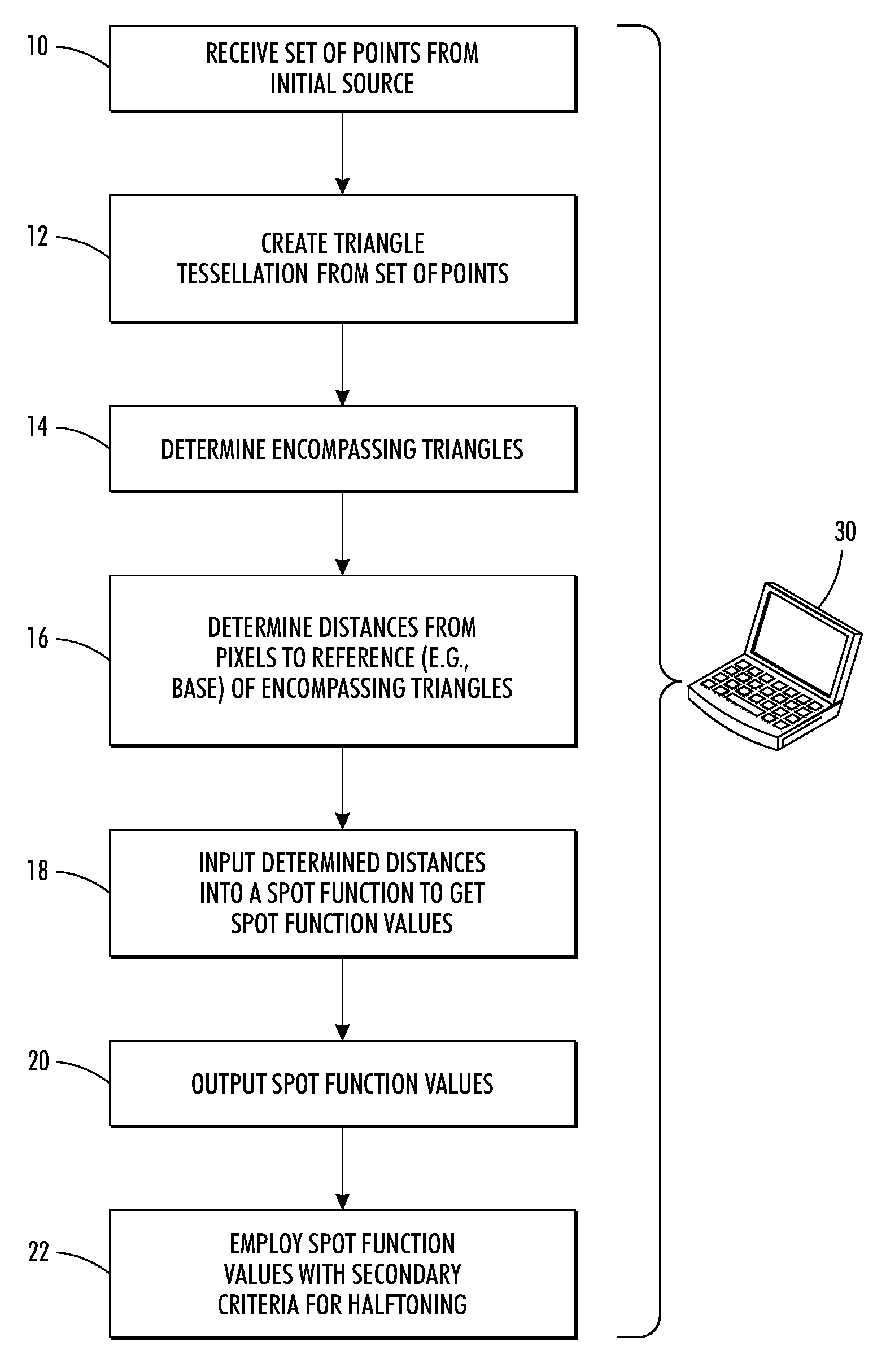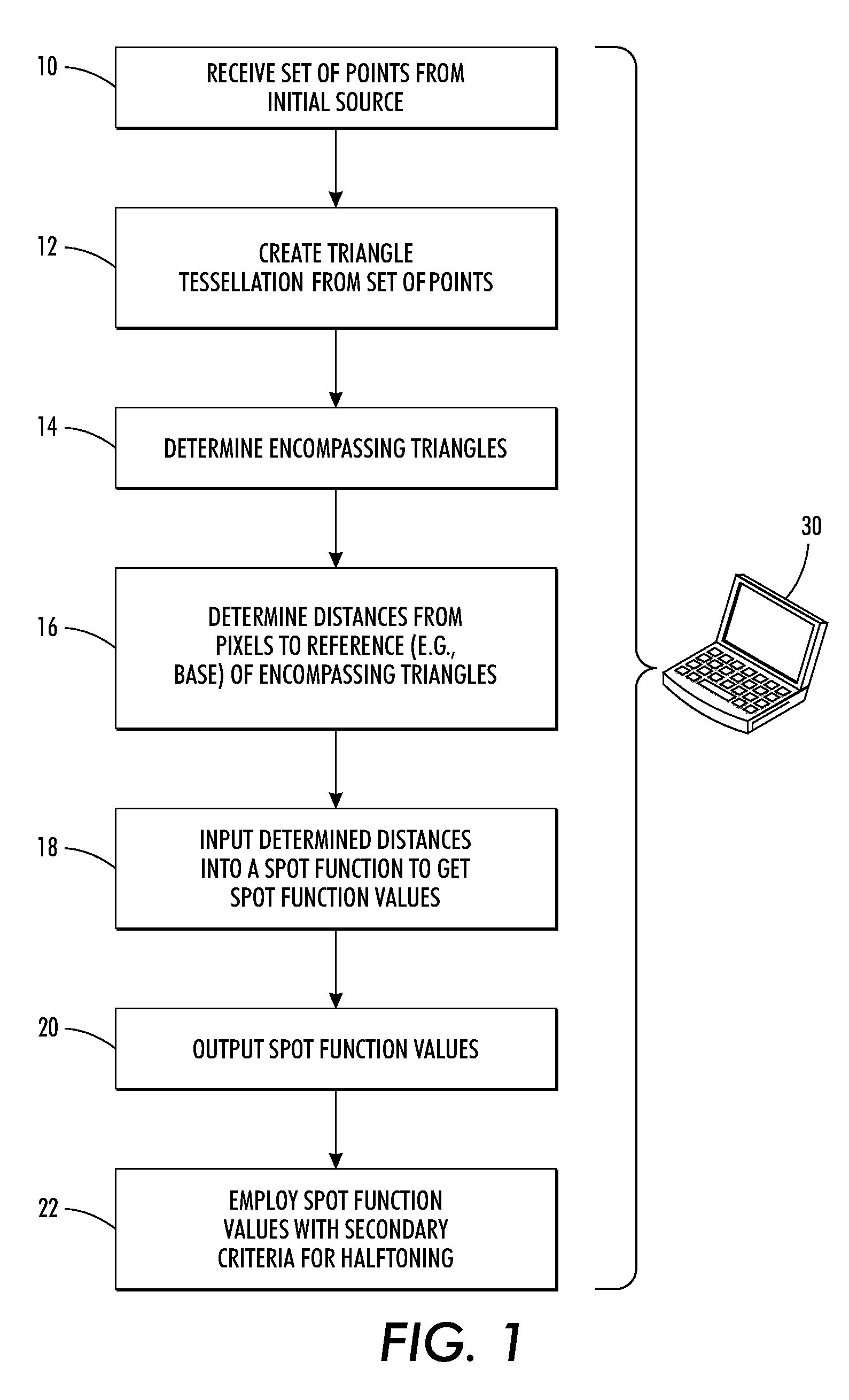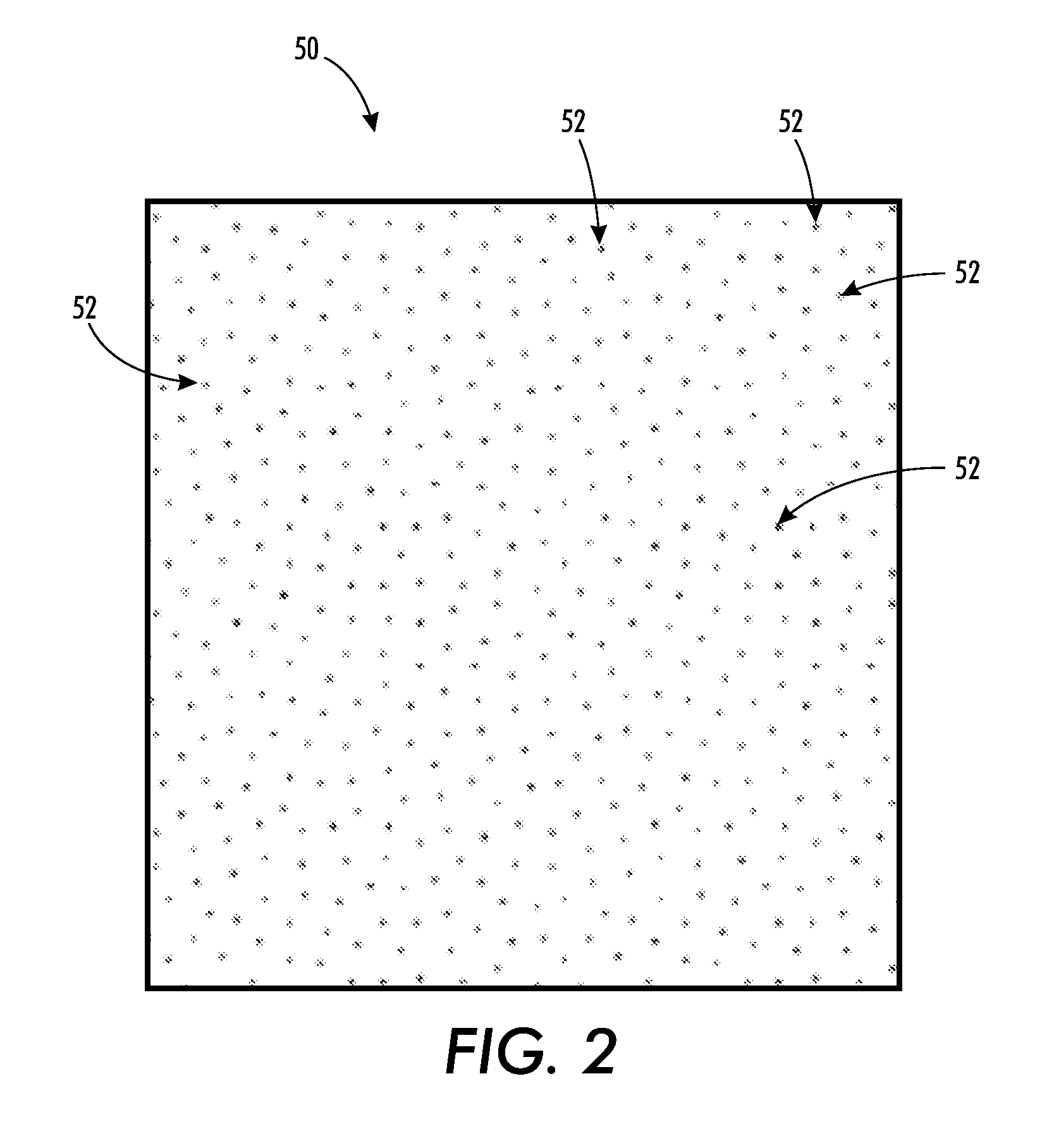Parametrically controlled halftone spot function for an irregular halftone grid
a grid and spot function technology, applied in the field of reproducing or displaying images, can solve the problems of poor touch points, high graininess, and inability to print individual halftone dots in infinite numbers of sizes, and achieve the effect of facilitating the generation of halftone images
- Summary
- Abstract
- Description
- Claims
- Application Information
AI Technical Summary
Benefits of technology
Problems solved by technology
Method used
Image
Examples
Embodiment Construction
[0026]The above-described problem is solved by providing a parametrically controlled spot function based on triangle tessellation, which facilitates dot growth control of periodic halftone using an irregular seed structure. The spot function determines the shape of the halftone dot used to reproduce a given pixel. It is well suited for growing halftone dots arrayed on a non-regular grid and can also be used for grids with regular order. The spot function has parameters that can be adjusted to control its sharpness and slope.
[0027]FIG. 1 illustrates a method of generating a halftone image by employing a parametrically controlled spot function, also known as a dot shape function, based on triangle tessellation. The spot function is well suited for controlled growth of halftone spots arrayed on a non-regular grid as encountered in 2nd generation stochastic screens. The herein-described spot function is general in that it can also be used for grids with regular order, such as convention...
PUM
 Login to View More
Login to View More Abstract
Description
Claims
Application Information
 Login to View More
Login to View More - R&D
- Intellectual Property
- Life Sciences
- Materials
- Tech Scout
- Unparalleled Data Quality
- Higher Quality Content
- 60% Fewer Hallucinations
Browse by: Latest US Patents, China's latest patents, Technical Efficacy Thesaurus, Application Domain, Technology Topic, Popular Technical Reports.
© 2025 PatSnap. All rights reserved.Legal|Privacy policy|Modern Slavery Act Transparency Statement|Sitemap|About US| Contact US: help@patsnap.com



